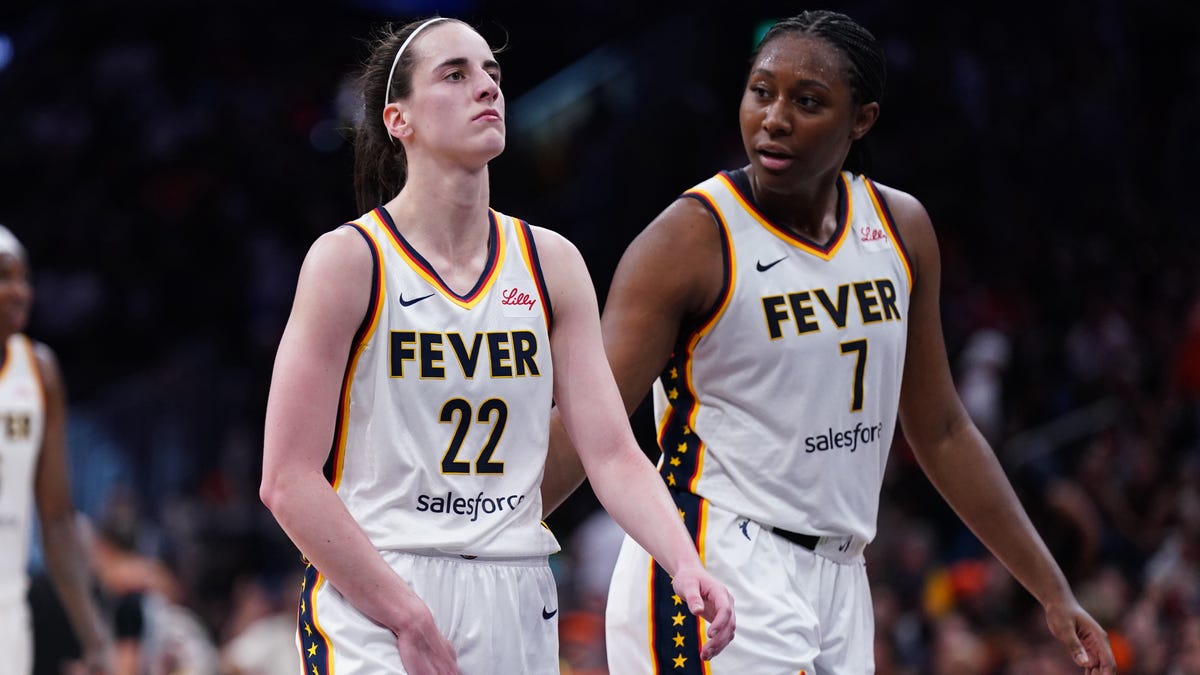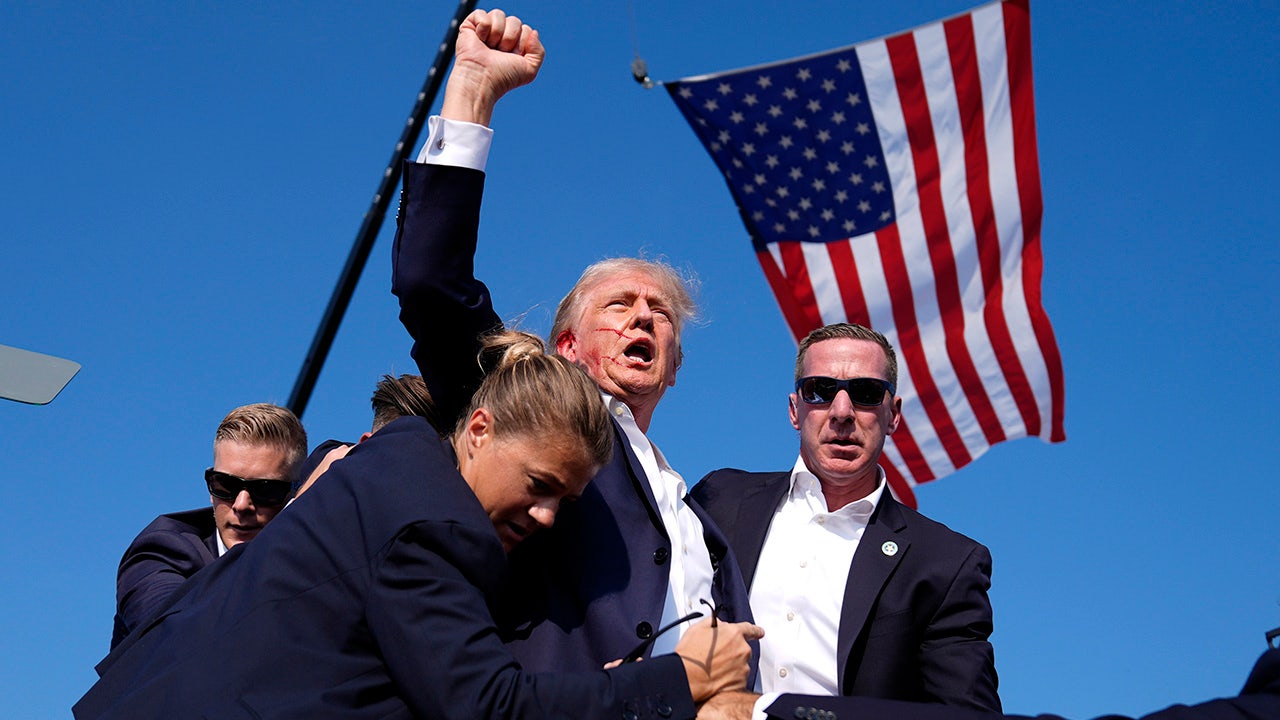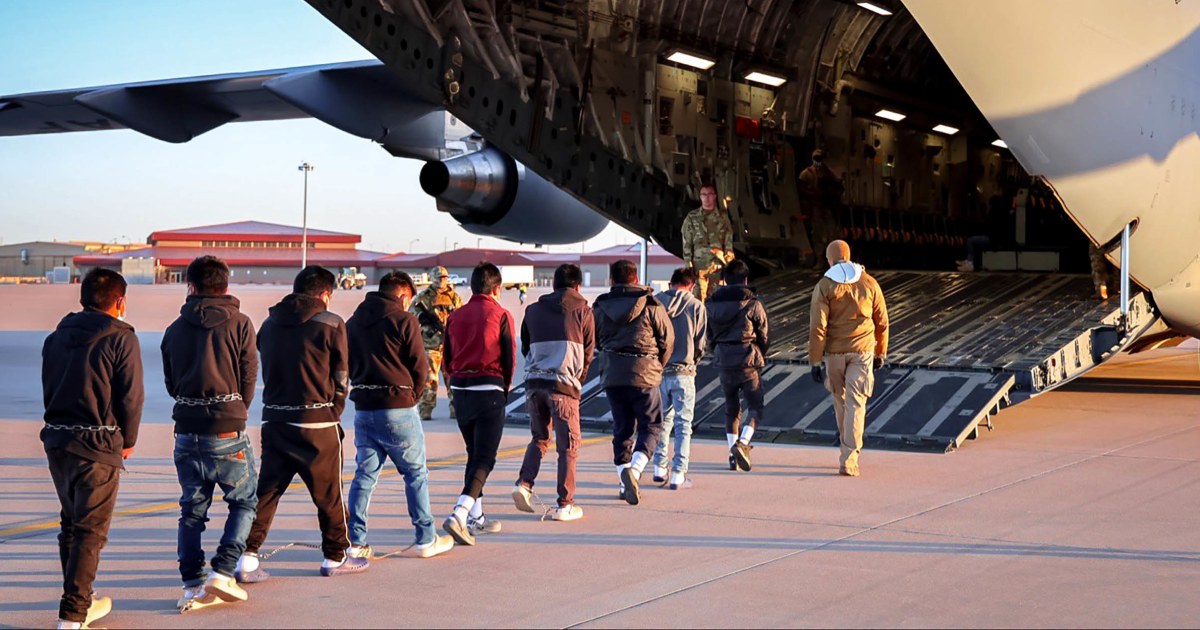Indiana
How Columbus, Indiana, became a mecca for modern architecture

COLUMBUS, Indiana – Ordinary Indiana? Not this town, which became a mecca of modern architecture in the second half of the 20th century.
The story of how it happened is almost as interesting as the architecture itself.
J. Irwin Miller, a Columbus native and the chairman of Cummins Engine Co., wasn’t a fan of bland post-World War II buildings. So he challenged his hometown to do better.
To encourage the use of some of the world’s best-known architects, his company established a fund that covered the design fees for dozens of public projects.
The idea worked. Columbus, population about 50,600, is home to dozens of striking and imaginative buildings, designed by a who’s-who of 20th and 21st century architects.
Among the big-name designers: I.M. Pei, Harry Weese, Eero Saarinen and numerous others.
The American Institute of Architects in 2012 listed Columbus sixth in its ranking of most architecturally important cities in the U.S. – behind Chicago, New York, Boston, San Francisco and Washington, D.C. First Lady Lady Bird Johnson, after a visit in the late 1960s, dubbed Columbus “the Athens of the prairie.”
Miller’s initiative also made Columbus, about 90 miles west of Cincinnati, a tourist draw, a top destination for art and architecture students, as well as anyone who appreciates good design.
Informal Saturday morning architecture tours were offered starting in the 1970s, according to Erin Hawkins, director of marketing for the Columbus Area Visitors Center. Today, they’re offered five days a week and regularly sell out.
Separately, visitors can tour the Miller House, the 1953-era home designed by Eero Saarinen for Irwin and Xenia Miller, and their five children. It’s considered among the very finest examples of mid-century modern architecture in the country.
View of First Christian Church, as seen through Henry Moore’s Large Arch in Columbus, Indiana.

Interior of Bartholomew County Library, designed by I.M. Pei; that’s First Christian Church framed by the window.

Columbus City Hall, designed by Edward Charles Bassett in 1981.
Touring the town
The Architecture Highlights Tour starts downtown, across the street from the visitors center at the First Christian Church, built in 1942, the city’s first foray into modern architecture. Miller, a member of the church, helped convince his fellow parishioners to hire Eliel Saarinen — father of Eero – who defied contemporary expectations of what a religious building should look like with this creation.
Made of steel, brick and concrete, the church is simple but stunning, a study in geometric shapes, with a soaring 166-foot bell tower. (Alas, the tower was largely behind scaffolding during my visit.)
This is one of a handful of buildings on the tour that visitors can experience from the inside. The sanctuary, spare but elegant, features high, vertical windows, no stained glass to be seen, and a cross that is off-center.
“Everything is off-center except for the communion table,” said tour guide Sally Madge. “It’s the idea that nobody’s perfect – we’re all human.”
The church set the stage for what was to come later, throughout the community.
In the late 1950s, Eero Saarinen – perhaps best known for designing the Gateway Arch in St. Louis and Dulles International Airport outside Washington, D.C. – was commissioned to design another church.
North Christian Church, with its hexagon shape and 192-foot-high spire, became the symbol of modernist Columbus, featured on brochures and other materials promoting the city.
Unfortunately, the church closed last year, due to falling membership, so we could only admire the structure from the outside.
It was Saarinen’s favorite design, according to Madge, completed in 1964, three years his death.
The only problem with its circular design, according to Madge: “If you were late for church, everybody knew it.”
Community leaders are in discussions to keep the building in use. A library branch is one possibility, according to Hawkins.
Also on the tour:
* The Bartholomew County Library, designed by I.M Pei in 1969, is one of the famous architect’s earliest designs. (He designed Cleveland’s Rock and Roll Hall of Fame in 1995.) Pei conceived of the library as a community gathering place, with a large outdoor plaza out front. Miller commissioned British artist Henry Moore’s now-iconic Large Arch for the space. This is another building tourgoers can see from the inside, including Pei’s intricate coffered ceiling.
* Schmitt Elementary, the first design funded by the Cummins Foundation, was designed by Harry Weese in 1957. The school features classrooms separated to look like small residences. “He wanted the kids to feel comfortable,” said Madge. “He wanted them to look like little houses for the kids.”
* And the Irwin Conference Center, formerly the Irwin Union Bank, also designed by Eero Saarinen, in 1954. It features white domes on top, which led to its nickname as the bra factory, said Madge.
“I was a little kid when this was built,” she said. “I remember walking into that one and wanting to do cartwheels in it. It was so gorgeous inside.”
Not all buildings were so well received, however.
“In the 1960s, this was a pretty conservative community,” she said. “Some of these buildings were difficult for some to understand.”
Some people in the community complained that one of the modern school buildings looked too much like a prison, according to Madge.
And speaking of prisons – others said the county jail, designed in 1990 by Don Hisaka, was much too beautiful.

The Miller House, designed by Eero Saarinen for Irwin and Xenia Miller.

Conversation pit at the Miller House in Columbus, Indiana.
Touring the Miller House
Not long after he finished the bank, Saarinen was back in town, working on a more personal commission: a house for Miller, his wife Xenia and their five children.
The Miller House, located about a mile and a half north of downtown, is accessed via a separate tour, also offered by the Columbus Area Visitors Center.
The house, nearly 6,800 square feet on 13.5 acres, is a wonder of modern design, simple but elegant, with floor-to-ceiling windows, white marble walls and bold colors.
The living room – with its four-sided couch and sunken conversation pit – is the showstopper.
“The kids used to run from the dining room and launch into the conversation pit,” said guide Bob Bolner, a retired Cummins engineer. “I call it a house. It’s really a home. They raised five children here.”
Bolner also pointed out teeth marks on the Steinway piano – perhaps made by an unenthusiastic young musician.
“The children had a lot of fun here,” noted Bolner.
But there was plenty for the adults to like, too, including a handmade rug with panels recounting periods of family history; Xenia Miller’s extra-large dressing room; and the large kitchen with three ovens, two sinks and a built-in refrigerator.
The garden, designed by landscape architect Dan Kiley, extends the living space outside, with a rectangular lawn, walls of arborvitae and trees planted in perfect lines.
Bolner called the property “the perfect example of mid-century modern architecture.”
Miller passed away in 2008 and his wife died a year later. The house, donated to Newfields in Indianapolis, was opened for tours in 2010.
The house adds to Miller’s legacy, which is omnipresent throughout town. “He really did feel architecture helped shape a community, who lived here and how they felt about a place,” said Madge.
The city, meanwhile, continues to add to its collection of modern buildings, even as modern architecture has become more mainstream.
Ivy Tech Community College most recently used funding from the Cummins Foundation Architecture Program to help pay the design fees for its new Columbus campus building, designed by IwamotoScott Architecture of San Francisco. It opened last summer.

Bartholomew County Jail in Columbus, Indiana.

Bartholomew County Courthouse, circa 1874, with the Bartholomew County Memorial for Veterans added in 1997.

Interior of First Christian Church, designed by Eliel Saarinen in 1942.

Former Irwin Union Bank — now a coffee shop — designed by Harry Weese in 1961.
Columbus, Indiana: If you go
Where: Columbus is about a five-hour drive from Cleveland, 90 miles west of Cincinnati.
Tours: Columbus Area Visitors Center offers several guided public tours, including its popular Architectural Highlights Tour, which runs Tuesday through Saturday. Price is $30 for adults, $25 for students. Miller House and Garden Tours are also offered Tuesday through Saturday, also for $30. Other tours: Iconic Columbus Walking Tour and Inn at Irwin Gardens Tour. For a schedule and reservations: columbus.in.us/tour-options
Staying overnight: The Inn at Irwin Gardens, located downtown, features five overnight rooms in a spectacular setting; room rates start at $220. Information: irwingardens.com
Where to eat: Upland Columbus Pump House, in an historic building overlooking the Flatrock River, with beer, burgers and more; and don’t miss Zaharakos, an old-fashioned ice cream parlor that dates back to 1900.
Information: columbus.in.us
Read more:
What’s new (and old) in Indianapolis: Bottleworks Hotel, Newfields, Kurt Vonnegut and more
With inspiration from Indianapolis, Destination Cleveland plans major downtown lighting installation

Interior of North Christian Church, which closed last year.

View of First Christian Church and the Large Arch from the library plaza in downtown Columbus, Indiana.

Indiana
Fever need to dig deep to beat last-place Sun, then suffer apparent Caitlin Clark injury setback

Stephanie White addresses fresh Caitlin Clark injury concern
The Fever star guard left Tuesday’s win over Connecticut in the final minute.
BOSTON — The Indiana Fever recorded an 85-77 win over Connecticut at TD Garden on Tuesday night, but concerns swirled for Fever star Caitlin Clark’s health after she left the game late.
Indiana moved to 12-10 with the win, and play in less than 24 hours against New York in Brooklyn on Wednesday night.
Here are three observations:
Caitlin Clark winces, holds back tears as she leaves game
Caitlin Clark left Indiana’s game late in the fourth quarter after wincing and grabbing the top of her right leg.
With 39 seconds left in the fourth quarter, Clark checked out of the game after an assist to Kelsey Mitchell. She went to turn around on defense and grabbed near her groin on her right leg.
Clark has already had a groin injury this season, but that was on her left leg. She also had a left quad injury, and those two injuries kept her out for 10 total games so far this season.
Clark seemed to be tearing up on the sideline in the final seconds of the game, and she sat on the bench with a towel over her head as the Fever closed out the win.
“No update, just felt a little something in her groin, so we’ll get it evaluated and see what happens from there,” Fever coach Stephanie White said postgame.
Indiana allows Connecticut to stay close entire game
Indiana came into the game at 11-10, and Connecticut was 3-18. On paper, it seemed like Indiana should come away with an easy win.
But things aren’t as easy as they look. Especially when one of Connecticut’s three wins coming into the game was against Indiana.
Indiana could never create space against Connecticut on Tuesday night, no matter how much the Fever scored. The Fever scored 29 points in the first quarter, but only led by one as they allowed 28 to the Sun. At halftime and at the end of the third quarter, the lead was just two.
The Fever allowed 12 offensive rebounds and turned the ball over 12 times, giving Connecticut multiple extra possessions. Indiana still won the game at the end of the day, but it was much more difficult than it should’ve been.
Fan wearing Fever jersey gets ejected
A fan wearing a No. 22 Indiana Fever t-shirt jersey was ejected from his courtside seat in the second quarter.
It happened after a timeout, when Sun guard Saniya Rivers went to the sideline where the fan was sitting to inbound the ball. Rivers then stepped away from the sideline, having a passionate conversation with two referees.
Security eventually identified the fan, who was escorted out of his seat and taken up through the lower-level seats to the concourse. Other fans booed and waved goodbye as he left with a security escort.
It’s not clear what the fan said or did to Rivers for him to get ejected.
Chloe Peterson is the Indiana Fever beat reporter for IndyStar. Reach her at capeterson@gannett.com or follow her on X at @chloepeterson67. Get IndyStar’s Indiana Fever and Caitlin Clark coverage sent directly to your inbox with our Caitlin Clark Fever newsletter.
Indiana
Indiana outfielder makes program history with high MLB Draft selection | Sporting News

The Indiana Hoosiers are officially on the board in the 2025 MLB Draft — and it’s one of the biggest stars in program history who heard his name called.
Outfielder Devin Taylor was selected by the Oakland Athletics with the No. 48 overall pick in the second round late Sunday night. He became the highest-drafted outfielder in program history and the top selection of the Jeff Mercer era, which began in 2019.
Over the past few months, Taylor had shown up across a wide range of mock drafts. Some projected him as a potential mid-to-late first-rounder, but he slipped a bit on draft night before finally landing with the A’s at 48.
His college career was nothing short of impressive.
Taylor was a unanimous All-American in 2025 and picked up eight total All-American honors during his three seasons in Bloomington. He was named the Big Ten Freshman of the Year in 2023 — one of just four in program history — and helped lead Indiana to 108 wins, three Big Ten Tournament appearances, and two NCAA Tournament berths.
But Taylor didn’t just produce — he stood out.
Taylor put together one of the best offensive seasons in the country in 2025, hitting .374 with 18 home runs and nearly twice as many walks as strikeouts. That kind of plate discipline is tough to teach — and it stood out to scouts all spring. With quick hands, raw power, and a mature approach in the box, he became one of the more talked-about hitters in this year’s draft class.
📲 Follow The Sporting News on WhatsApp
His selection gives Indiana another strong presence in the early rounds and adds to the growing list of players who’ve gone pro under head coach Jeff Mercer. Taylor was one of the most reliable bats in college baseball over the last few seasons and kept improving each year.
Scouts are drawn to his clean left-handed swing and ability to stay within himself at the plate. He’s shown he can hit for both average and power, and he doesn’t chase much — all signs that point to a player who could carve out a long-term role as an everyday outfielder.
For the A’s, he fills a real need. Only two outfielders currently rank among their top 10 prospects, so bringing in a polished college bat like Taylor adds immediate depth to the system and fits the timeline of a team still working through its rebuild.
For Oakland, it’s another advanced college bat with upside. And for Indiana, Taylor’s rise is another example of a program continuing to develop high-level talent and stay nationally relevant.
Indiana
In effort to erase DEI, Indiana cuts school and college programs. Here’s what got targeted

In a sweeping policy shift, Indiana state agencies have ended funding for multiple education initiatives and scrubbed dozens of materials that referenced diversity, equity, or inclusion — part of a directive from Gov. Mike Braun to eliminate what his administration calls divisive ideology. The changes affect both K-12 schools and public universities, with impacts on students, teachers, and college outreach efforts.
The executive order, issued earlier this year, required agencies to eliminate all initiatives labeled “diversity, equity, and inclusion,” or DEI, which the administration described as incompatible with “merit, excellence, and innovation.” State reports show that 70 DEI-related trainings, instructional efforts, or programs have been removed so far.
“Indiana has replaced the divisive, politically charged DEI ideology with Merit, Excellence, and Innovation: a level playing field where every single Hoosier has the chance to get ahead with hard work,” Braun said in a statement.
The executive order touched nearly every corner of the state’s education system. In K-12 schools, the Indiana Department of Education conducted a wide-ranging audit to remove references to equity and inclusion from state academic standards, instructional materials, grant applications and websites. In higher education, a grant program overseen by the Indiana Commission for Higher Education that targeted first-generation students, students of color and others from underrepresented backgrounds was not renewed.
The Indiana School for the Blind and Visually Impaired and the Indiana School for the Deaf — which are both state run — were required to strip DEI-related language from their handbooks and policy documents.
Programs changed, phased out
Among the most visible cuts is the Padres Estrellas initiative, which embedded Spanish-speaking outreach workers in schools and neighborhoods to help Latino families enroll in the state’s 21st Century Scholars program — a college scholarship for low-income students. The Commission for Higher Education ended the program last month.
In 2023, CHE Commissioner Chris Lowery described the state’s low college-going rate for Hispanic and other students of color as “unacceptable” and “an emergency.”
The programs and materials now being phased out are detailed in a 444-page document released by Braun’s office. It includes:
Higher education:
-
A STEM teacher recruitment grant used to fund a Black teacher residency program to support schools with teacher shortages in underserved areas will expire in August and will not be renewed. “Instead, that funding may now be directed to an organization that will support STEM teachers based on their merit and not their race,” according to an executive summary of statewide changes. -
The College Success Program that funded coaches to support “first-generation students of color” at Purdue Northwest, Indiana State University and Valparaiso University will not continue into 2026. -
The Career Coaching Grant, “tailored to support minority and low-income students” in considering careers,” will end this year. The Department of Education will then take it over “to ensure grants fund programs in a manner consistent” with Braun’s anti-DEI order. -
The state’s College Equity Reports on student preparedness and success by race and ethnicity, socioeconomic status and gender were removed from the CHE website.
K-12 education:
-
Videos on the state online Learning Lab — which are meant for families, teachers and administrators — were removed if they included phrases like “to support diverse learners in inclusive classrooms” or referenced “the essential role of equity and inclusion in the new science standards.” Additional removals are ongoing, according to the report. -
Academic standards tied to ethnic studies, certain social studies topics and employability skills are undergoing formal review to eliminate language deemed inconsistent with the executive order. -
A state-issued guide for applying to the High Ability Program grant was revised to remove references to “equity and access” and “underrepresented populations.” -
The state’s application for a federal charter school grant program will no longer include the phrase “diverse and equitable learning opportunities.”
An Indiana Department of Education spokesperson, in response to questions from WFYI, said the department will continue to “elevate the importance of improving outcomes for all K-12 students.”
“This means ensuring each student has access to supports based on their unique learning needs,” Courtney Bearsch said in an email.
Advocates of these programs worry their removal disproportionately harms students already facing systemic barriers. In Marion County, for example, less than 56% of Hispanic students read at grade level by third grade — a key predictor of later academic achievement.
Mark Russell of the Indianapolis Urban League said Braun is now taking a stance that Indiana will “treat everybody the same regardless of their standing or circumstances.”
Russell worries these new policies, coupled with the Trump administration’s overhaul of the U.S. Education Department, creates an environment where students who would benefit from additional support, will be left behind.
“It cannot be denied that these steps that have been taken at both the federal and the state level are detrimental to the interest and well-being of at-risk students of all races, stripes, and creeds,” Russell said.
Redacting equity from classroom policy
The Department of Education’s purge of DEI references extended beyond K-12 standards, which outline what Indiana students are expected to learn. The department changed grant conditions and pressured national partners to remove DEI language from strategic plans if they wanted to keep working with the state.
A vendor that provides student assessments for the state, Smarter Balanced, removed a DEI page from its website at the department’s request, according to the report. In other cases, national accreditation bodies and technology organizations altered planning documents after being contacted by the department.
And even a letter from Secretary of Education Katie Jenner to local school leaders was flagged. A draft version of the Teacher of the Year nomination letter, circulated earlier this year, described an ideal candidate as someone who fosters “a school culture of equity and success.”
David Marcotte, executive director of the Indiana Urban Schools Association, said the principles behind DEI are long-standing practices of good teaching, such as understanding students’ backgrounds and helping all feel valued. He said educators will follow the state’s new rules.
“However, making sure all students feel valued and comfortable each day, regardless of background, will continue to be a goal,” Marcotte said. “It’s called good teaching.”
All of these changes come as Indiana schools are becoming more diverse. The number of students learning English in Indiana nearly doubled since 2012 to just more than 9%. In Marion County, English language learners make up nearly a quarter of all students at public schools.
Eric Weddle is WFYI’s education team editor. Contact Eric at eweddle@wfyi.org or follow him on X at @ericweddle.
-

 Culture1 week ago
Culture1 week agoTry to Match These Snarky Quotations to Their Novels and Stories
-

 News6 days ago
News6 days agoVideo: Trump Compliments President of Liberia on His ‘Beautiful English’
-

 News1 week ago
News1 week agoTexas Flooding Map: See How the Floodwaters Rose Along the Guadalupe River
-
Business1 week ago
Companies keep slashing jobs. How worried should workers be about AI replacing them?
-
Finance1 week ago
Do you really save money on Prime Day?
-

 Technology1 week ago
Technology1 week agoApple’s latest AirPods are already on sale for $99 before Prime Day
-

 News5 days ago
News5 days agoVideo: Clashes After Immigration Raid at California Cannabis Farm
-

 Politics1 week ago
Politics1 week agoJournalist who refused to duck during Trump assassination attempt reflects on Butler rally in new book















